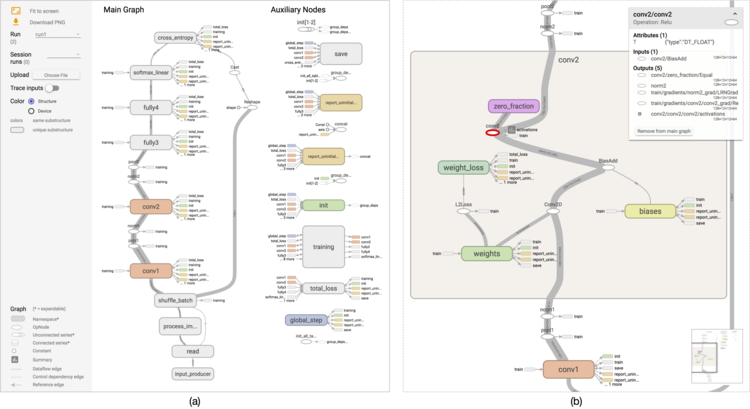Data Flow Graph (DFG)
YouTube search... ...Google search
- Visualization
- TensorBoard
- Directed Acyclic Graph (DAG)
- Graph Convolutional Network (GCN), Graph Neural Networks (Graph Nets), Geometric Deep Learning
- Visualizing Dataflow Graphs of Deep Learning Models in TensorFlow | K. Wongsuphasawat, D. Smilkov, J. Wexler, J. Wilson, D. Mané, D. Fritz, D. Krishnan, F. B. Viégas, & M. Wattenberg - UW Interactive Data Lab
A data-flow graph (DFG) is a graph which represents a data dependencies between a number of operations. Any algorithm consists of a number of ordered operations.
- Node: In TensorFlow, each node represents the instantion of an operation. Each operation has >= inputs and >= 0 outputs.
- Edges: In TensorFlow, there are two types of edge:
- Normal Edges: They are carriers of data structures (tensors), where an output of one operation (from one node) becomes the input for another operation.
- Special Edges: These edges are not data carriers between the output of a node (operator) and the input of another node. A special edge indicates a control dependency between two nodes. Let's suppose we have two nodes A and B and a special edges connecting A to B; it means that B will start its operation only when the operation in A ends. Special edges are used in Data Flow Graph to set the happens-before relationship between operations on the tensors.
